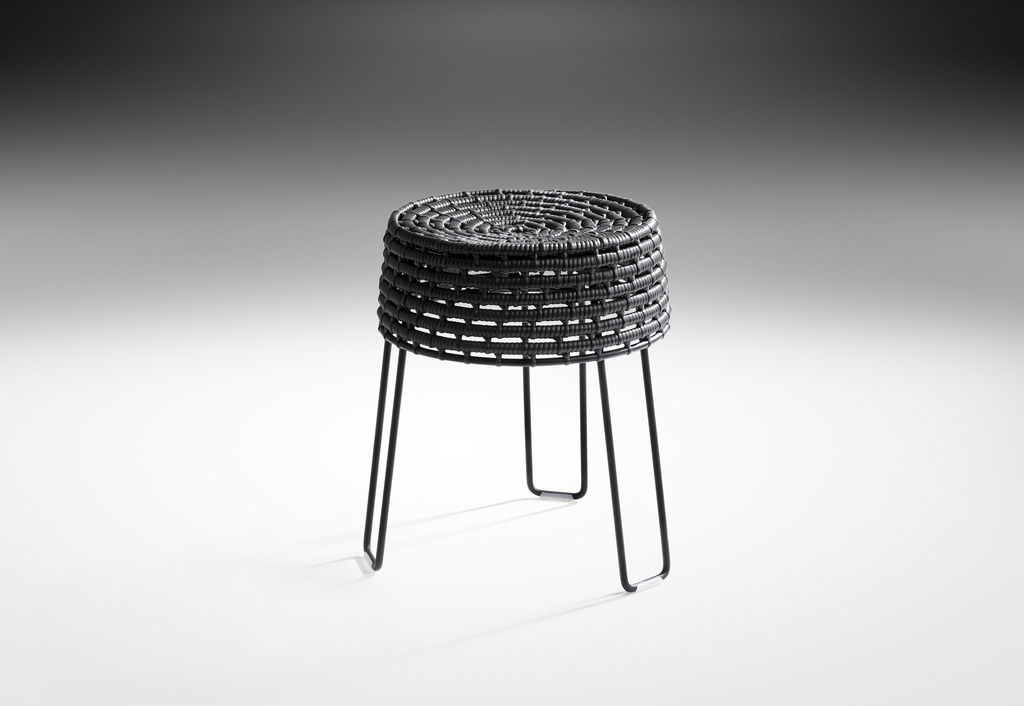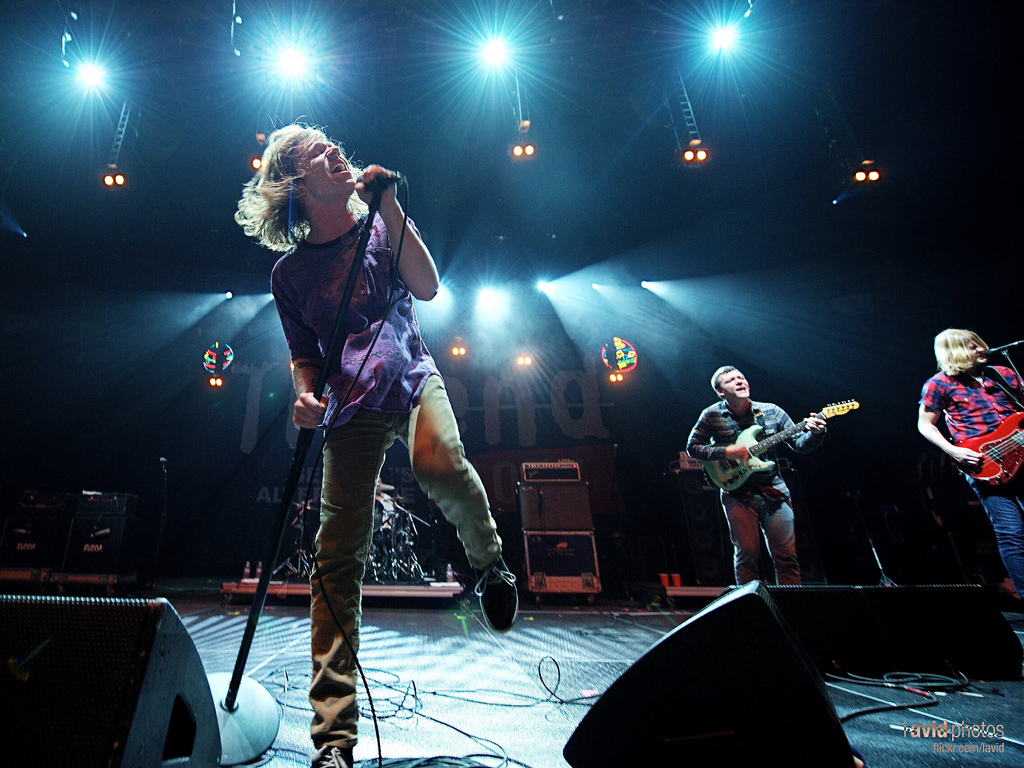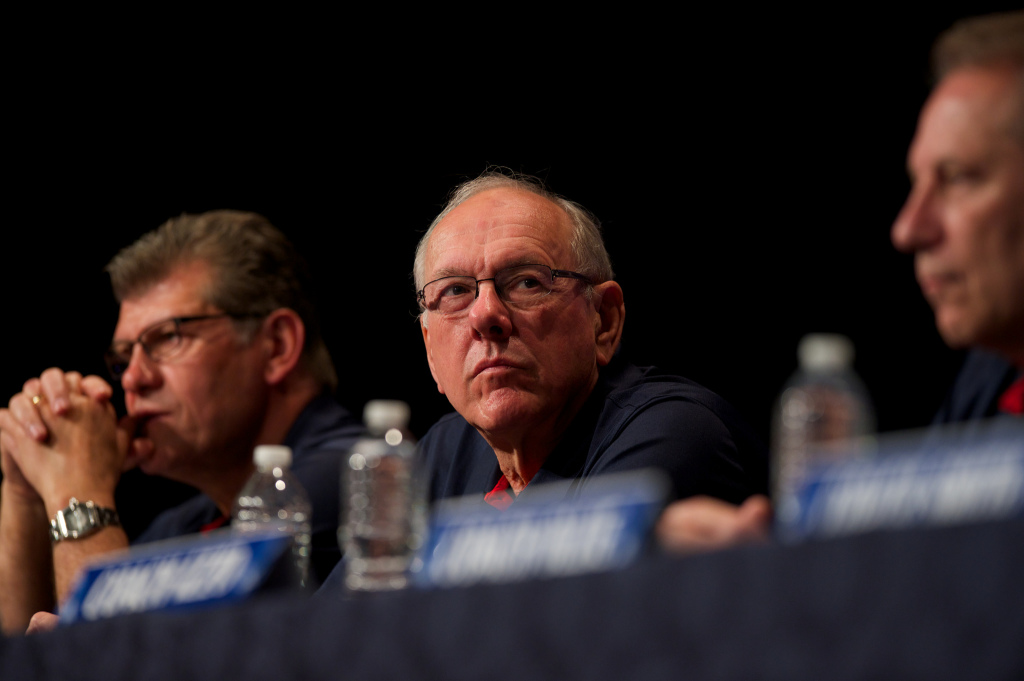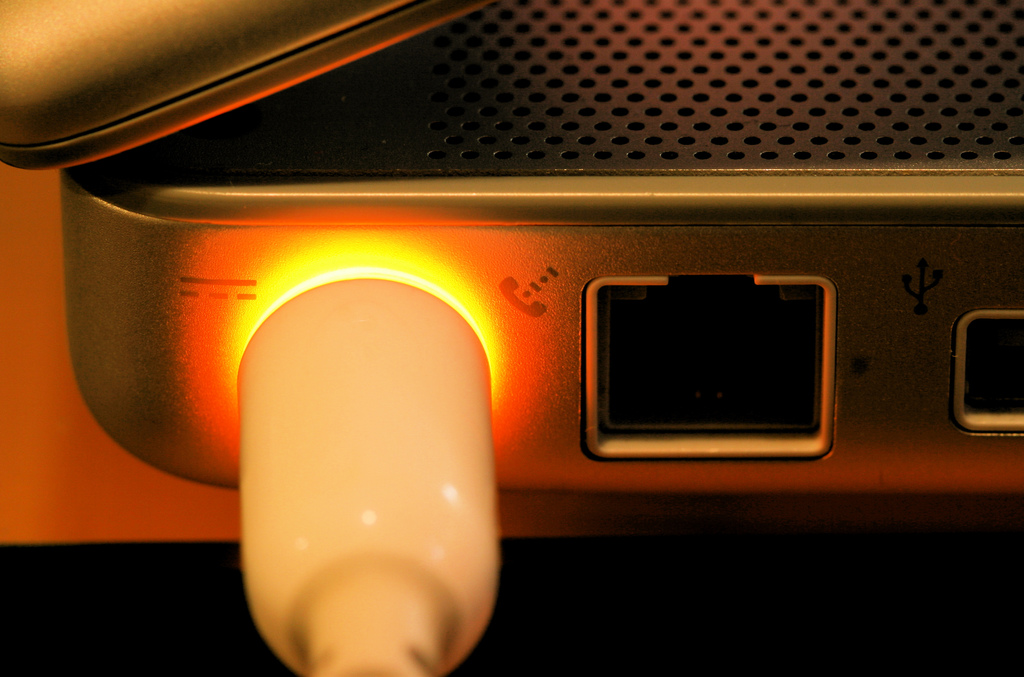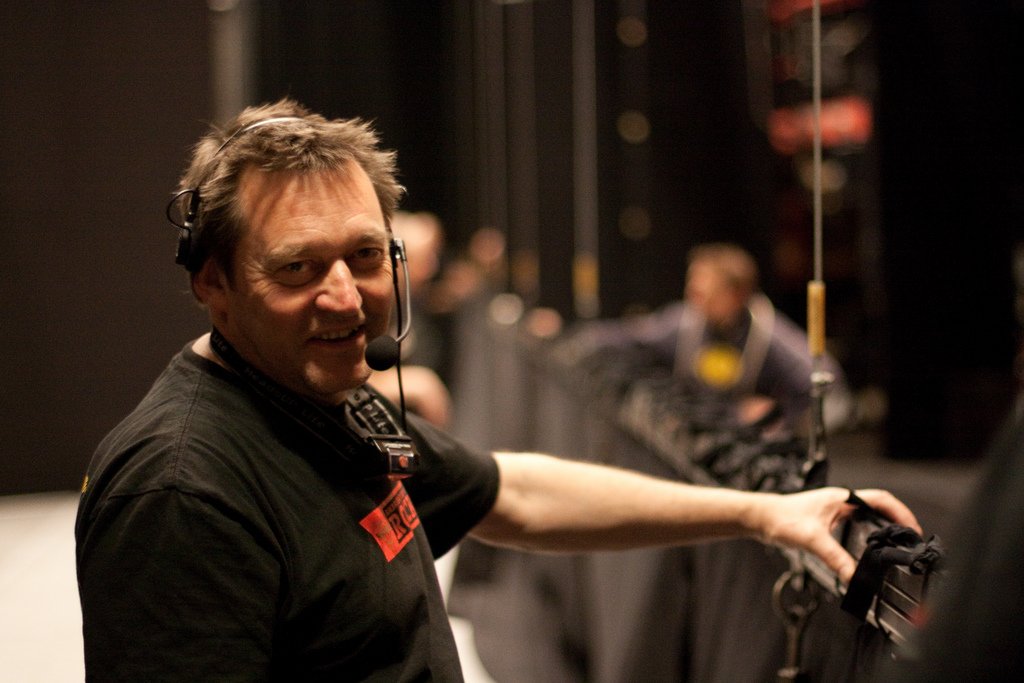New Study Shows How Leaders Can Be Made
It’s a common belief that leaders are born, not made. However, researchers at the University of Illinois don’t think so.
Professors Kari Keating, David Rosch, and Lisa Burgoon believe that leadership can be taught, and it follows a certain progression.
“In only 15 weeks in our introductory class, students reported significant gains in three important components of leadership: self-efficacy, or confidence in their ability to lead; skills; and motivation to lead,” said Keating, who teachers leadership courses in the College of Agricultural, Consumer and Environmental Sciences’ agricultural leadership education major.
Rosch suggests that science is involved in leadership training.
“It’s a three-legged stool: we call it being ready, willing, and able,” Rosch said. “Students first become ready to learn about being a leader; then they become willing to learn the skills necessary to practice leadership; and finally they’re able to lead because they have the skills and the motivation to do it. You can’t really move on to the other legs of the stool until you’ve achieved a certain amount of this readiness.”
Rosch compares the progression to math.
“You’re not ready to do calculus if you don’t know the basics of algebra,” he said. “This shows us we need to work on readiness so students can make the most of advanced leadership courses.”
Leadership development, though, is not a solitary endeavor.
“The definition we use in the course is that leadership is an individual influencing a group of people toward a common goal,” Rosch said. “So how do you influence people? You can lead through your interactions, your relationships, your communication, the way you express thanks, your ethics.”
The study highlights two implications.
“First, students who choose to enroll in elective leadership courses may not all be similar on incoming measures of confidence and motivation to lead,” the professors wrote in the study. “Leadership educators should therefore consider nuanced methods for providing individual students appropriate degrees of challenge and support for their leadership development. Early-semester assignments asking students to reflect on their own personal journey to become the leaders they are today allows both high-capacity and low-capacity students the chance to consciously focus on their incoming status and instructors to assess their class and plan accordingly. Second, practitioners should focus on the developmental sequencing of their programs and how they administer the ‘pipeline’ of students who progress through them.”
(Story quotes: Phyllis Picklesimer. Photo credit: HALDANE MARTIN via photopin cc)
Sonics, Who? KeyArena at Seattle Center is Quite Profitable
I’d like to point you in the direction of a good article in the Seattle Times that focuses on one of IAVM’s member venues—the KeyArena at Seattle Center. The article discusses how the arena bounced back after the NBA’s Seattle Sonics vacated the venue.
“The Lower Queen Anne facility has gone from losing money in the Sonics’ final years to turning more than $1.2 million in profit for Seattle last year,” reporter Ashley Scoby wrote. “The facility’s economic buoyancy results largely from booking more musical performers. It also means that, despite the heartbreak of Sonics fans, the team’s departure wasn’t a disaster for the city’s pocketbook.”
A partnership with AEG Facilities has also helped the venue become profitable.
“We want to be in major markets that have a great passion for sports and entertainment,” IAVM member Bob Newman, president of AEG Facilities, told Scoby. “Seattle fits every part of that. The city’s history in sports, music, culture and entertainment is one of the top in the country, if not the world.
“There aren’t many major arenas that have performed as well as KeyArena after a major departure,” Newman continued later in the article. “I think it stands at the top of the list.”
Please visit the Seattle Times to read the full story on how the arena reinvented itself in order to increase its revenues and attendance.
(Cage the Elephant at the KeyArena—photo credit: laviddichterman via photopin cc)
Syracuse Coach Jim Boeheim Embraces Virtual Reality
Back in March, I wrote about Facebook’s purchase of Oculus VR and how virtual reality (VR) could affect your venue. Today, I received a press release from Next Galaxy Corp., a developer of VR technology, which said that Syracuse University basketball coach Jim Boeheim is opening up his personal gym in a partnership with the company in order to help produce revenue generating VR experiences.
“I believe that the development of virtual reality technology by Next Galaxy will soon change the way sports fans enjoy the game,” he said in the release. “We believe the sports fanatics, especially those that can’t get to the game, will agree to pay impressive amounts to experience team adventures in VR, dramatically increasing team revenue.”
In an article in the Syracuse Post-Standard, reporter Donna Ditota spoke with Barrett D. Ehrlich, a financial consultant for Next Galaxy, about the project.
“Ehrlich said Boeheim’s first production will take viewers into the coach’s gym and show them his trophy room,” Ditota reported. “In the future, Boeheim might provide immersive insights into the way he coaches his program. NCAA regulations and SU restrictions will not permit the SU coach to, say, project what it’s like to be in the middle of a practice huddle. The content he creates will be personal experiences, likely originating from his home. Boeheim’s DeWitt home includes an indoor basketball court (a half-court configuration).”
VR is an exciting technology that can offer everyday fans experiences such as watching a game from an owner’s box, riding in a race car next to the driver, or hanging out backstage at a concert. There’s also a chance to monetize these experiences.
“We believe once a team owner learns, for example, he can use VR on-court-on-field as a revenue generator—[he] will want to know more and more about it,” said Mary Spio, CEO of Next Galaxy. “It should become very clear to the owner that VR is offering significant value to even the average fan, especially the ones that are cheering on the sports idols that mean so much to them. Strategic business development discussions with other high-profile sports figures and teams are taking place. VR can turn into a huge revenue generator.”
While I don’t think technology can solely replicate a live, human-to-human experience, the following promotional video can help you get a better understanding of how VR can work in a venue as far as revenue goes.
(Image: U.S. Department of Defense)
The Five Technologies That Have Grown With Me
After spending a long four-and-a-half years getting my Business Marketing degree from the University of Montana, I am preparing to graduate this December. Just like most last semester seniors, I am finding myself beginning to prepare to enter the work force. Considering myself extremely lucky among many of my fellow graduates, I have a concrete knowledge of what I want to spend the rest of my life doing and have been provided the opportunity to do this at my university. With that being said, my uses of technology have morphed and evolved since I entered college as a wide-eyed freshman. There have been several pieces of technology that I have used during my career here in Missoula. These, however, are the five that are making my transition into the “real world” as smooth as possible.
1. Applications—Oh the wonderful, crowded new world of apps! In fall 2010 if someone had told me that I could have had seven pages of my favorite games, websites, and music one thumbprint scan away, I would have been blown away. In the few short years that I have been using these square little helpers, they have changed radically. It has gone from using Candy Crush, Words With Friends, and Pinterest to keep me entertained in class to needing LinkedIn, The Wall Street Journal, and Dropbox to keep me on the same page as my peers and competitors.
2. Email—Gone are the days when I would be relaxing in the evening only to realize it had been two weeks since I checked my inbox. In the world today, people will respond to emails in a matter of minutes (if not seconds), making being away from your lifeline for more then a few hours unheard of and often unacceptable. At this point in my blended college/professional career, I am receiving messages from professors, bosses, classmates, my internship director, and, of course, IAVM updates on a daily basis. Four years ago, my email could be left for days and be just fine, while now it is the last thing I check before I go to bed and the first thing I look at when waking up.
3. Online Banking—It did not take long for me to realize that a plastic debit card does not make it fake, plastic money. At the age of 18, living in the dorms with a meal plan, rent, and groceries were a non-factor in my life. This quickly changed as I moved off campus and toward becoming an “adult.” Soon my life was filled with pay periods, time cards, electric bills, and takeout transactions. Online baking makes it easy to not only manage my account balances, but track spending and even deposit checks from home. When you’re going to school full time, working, and doing an internship like I am, these little conveniences are truly life changing.
4. “The Cloud”—This mythical land that holds my research papers, marketing plans, music, and photos has followed me over to my job in the venue management industry. This file storage makes sharing documents—such as spreadsheets, waiting lists, and event information sheets—available to all different departments within our multipurpose venue. This makes forgetting to CC necessary personnel on an attached email a much smaller crisis then it has in the past.
5. Smartphones—Or what I like to call the “Queen Bee.” I sheepishly will admit that this five-inch, four-ounce plastic and metal piece of technology runs my life, much more than it should. Not only does it hold the power to run all of the before mentioned items, but it also keeps me in touch with my family and friends through calling, texting, and a plethora of social media. Without my smartphone, I could not keep track of all the details of my crazy schedule such as class, group meetings, work shifts, and other events. These little pieces of heaven make our worlds spin round.
What technologies are helping you in the “real world”? Please let me know in the comments.
(photo credit: Matthew Clark Photography & Design via photopin cc)
International Stage Management Day is October 10
The first Stage Management Day took place last year on October 10. It’s being held again this year on the same day, but renamed the International Stage Management Day due to its popularity worldwide.
“Last year, as it turned out, Stage Management Day captured the imagination of people right across the world,” Andy Rowley, executive director of the Stage Management Association, told The Stage. “We traced Stage Management Day from New Zealand all the way across Australia, through Europe, the U.K. of course, and all the way across the U.S.A.”
The day celebrates all the work that stage managers do. Celebration examples from last year include letting stage managers take over Twitter feeds, food prepared for them by casts, and mentions in performance programs.
“It seems to be a chance to network and celebrate all the backstage really,” Rowley told The Stage. “Stage managers are such a lynchpin backstage that they could hardly do it without all their colleagues—so it’s becoming more of a celebration backstage full stop.”
What are you doing to celebrate your stage managers on October 10? Please let us know in the comments.
(photo credit: Loungedown via photopin cc)
Do you want to receive a Front Row News weekly digest?
Categories
- Allied (861)
- Architecture (147)
- Arenas (747)
- Career (897)
- Convention Centers (895)
- Education (623)
- Events (1,544)
- Food & Beverage (193)
- Foundation (113)
- Guest Experience (1,496)
- Industry News (2,270)
- Leadership (1,888)
- Marketing (150)
- Membership (2,000)
- Music (213)
- Performing Arts Centers (454)
- Professional Development (409)
- Research (127)
- Safety & Security (442)
- Sports (763)
- Stadiums (608)
- Student (159)
- Technology (516)
- Ticketing (92)
- Touring (82)
- Trends (364)
- Uncategorized (743)
- Universities (218)
- Video (25)
- Young Professional (198)
Twitter Feed
- Twitter feed loading
Recent Posts
- Venuworks and ATG Entertainment Selected to Manage Fresno Convention and Entertainment Center
- Seattle Convention Center Announces Strategic Leadership Appointment and Growth Initiatives for 2026
- Peggy Daidakis Humbly Made Convention Center History
- Welcome to Our Newest Members
- New Member Benefit! IAVM Partners with Advantage Training to Elevate Staff Readiness and Guest Experience
Categories
- Allied
- Architecture
- Arenas
- Career
- Convention Centers
- Education
- Events
- Food & Beverage
- Foundation
- Guest Experience
- Industry News
- Leadership
- Marketing
- Membership
- Music
- Performing Arts Centers
- Professional Development
- Research
- Safety & Security
- Sports
- Stadiums
- Student
- Technology
- Ticketing
- Touring
- Trends
- Uncategorized
- Universities
- Video
- Young Professional
Archives
- December 2025
- November 2025
- October 2025
- September 2025
- August 2025
- July 2025
- June 2025
- May 2025
- April 2025
- March 2025
- February 2025
- January 2025
- December 2024
- November 2024
- October 2024
- September 2024
- August 2024
- July 2024
- June 2024
- May 2024
- April 2024
- March 2024
- February 2024
- January 2024
- December 2023
- November 2023
- October 2023
- September 2023
- August 2023
- July 2023
- June 2023
- May 2023
- April 2023
- March 2023
- February 2023
- January 2023
- December 2022
- November 2022
- October 2022
- September 2022
- August 2022
- July 2022
- June 2022
- May 2022
- April 2022
- March 2022
- February 2022
- January 2022
- December 2021
- November 2021
- October 2021
- September 2021
- August 2021
- July 2021
- June 2021
- May 2021
- April 2021
- March 2021
- February 2021
- January 2021
- December 2020
- November 2020
- October 2020
- September 2020
- August 2020
- July 2020
- June 2020
- May 2020
- April 2020
- March 2020
- February 2020
- January 2020
- December 2019
- November 2019
- October 2019
- September 2019
- August 2019
- July 2019
- June 2019
- May 2019
- April 2019
- March 2019
- February 2019
- January 2019
- December 2018
- November 2018
- October 2018
- September 2018
- August 2018
- July 2018
- June 2018
- May 2018
- April 2018
- March 2018
- February 2018
- January 2018
- December 2017
- November 2017
- October 2017
- September 2017
- August 2017
- July 2017
- June 2017
- May 2017
- April 2017
- March 2017
- February 2017
- January 2017
- December 2016
- November 2016
- October 2016
- September 2016
- August 2016
- July 2016
- June 2016
- May 2016
- April 2016
- March 2016
- February 2016
- January 2016
- December 2015
- November 2015
- October 2015
- September 2015
- August 2015
- July 2015
- June 2015
- May 2015
- April 2015
- March 2015
- February 2015
- January 2015
- December 2014
- November 2014
- October 2014
- September 2014
- August 2014
- July 2014
- June 2014
- May 2014
- April 2014
- March 2014
- February 2014
- January 2014
- December 2013
- November 2013
- October 2013
- September 2013
- August 2013
- July 2013
- June 2013
- May 2013
- April 2013
- March 2013
- February 2013
- January 2013
- May 2012
- March 2012
- December 2011
- November 2011
- October 2011
Recent Comments
- Frank Bradshaw, Ph.D., CVE on John Meyer, CVE, a Tireless Advocate of Certification for Venue Professionals, Has Died
- Neil Sulkes on Hilary Hartung, Friend to Many in Venue Marketing, Has Left Us
- Jason Parker, CVE on The Devastation of Hurricane Helene and How We Can Support One Another
- Larry Perkins on Touhey Testifies Against Speculative Ticketing Before Congressional Subcommittee
- Peter Secord on Major Players for Planned Elkhart Amphitheater Were in the Mix at VenueConnect

